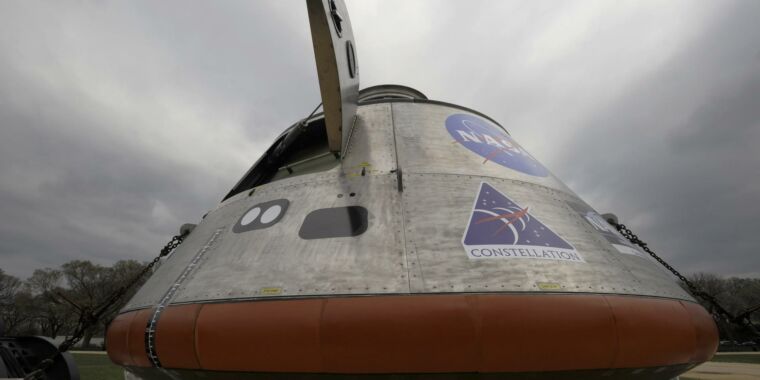

POT
NASA’s inspector general released a detailed report Thursday that investigates the time and money the space agency has spent to develop its Orion spacecraft. This is the vehicle that NASA hopes to use to fly its astronauts to and from lunar orbit as part of the Artemis Program.
Since NASA awarded its first contract with Orion in August 2006, the report says NASA has spent $ 16.7 billion on Orion development, or about $ 1.1 billion annually. NASA has paid most of those funds to Lockheed Martin, the prime contractor for the development of the Orion capsule. For this count, the report does not include funds for the large Orion Service Module, which is being built and delivered by the European Space Agency.
Most of the Lockheed awards were held under a “cost plus” contract structure, in which NASA must reimburse Lockheed for all allowable costs and, in addition, pay applicable incentive and award fees. Despite significant cost increases and schedule delays, Lockheed received nearly all available award fees, according to the report. Those award fees seemed excessive to NASA Inspector General Paul Martin.
He writes that the agency’s contract with Lockheed for Orion, “in our view, discourages the performance of the contractor by offering him the opportunity, at the end of a final award rate period, to earn award fees not previously earned. We estimate that At a minimum, NASA paid at least $ 27.8 million in excess award fees to Lockheed throughout development for the ‘Excellent’ performance ratings it received while the Orion Program was experiencing substantial cost increases and schedule delays. “
A long story
Orion has a long and somewhat tortured history, and some of the delays are due to changing requirements. Throughout its development in the past 15 years, the vehicle has been called to perform various tasks, including flying astronauts to the Moon and an asteroid, and serving as a taxi to fly astronauts to the International Space Station. In 2010, when the program was behind schedule and over budget, President Obama tried to cancel it. But Congress rejected this effort, and it was eventually reinstated. Current NASA Administrator Jim Bridenstine inherited the Orion program and is trying to take advantage of it as part of NASA’s Artemis Moon initiative.
The current plan is for Orion to conduct a test flight in late 2021 or 2022 on top of a Space Launch System rocket, and then take the crew on an Apollo-8-like mission around the Moon no earlier than 2023. At that point, the spacecraft will. It has been in development for almost two decades and has cost the space agency more than $ 20 billion.
Two decades is a long time to develop a manned spacecraft. During a comparable period from 1961 to 1981, NASA introduced no fewer than five spacecraft carrying humans with the Mercury, Gemini, and Apollo capsules, the Lunar Module, and the space shuttle.
The new report criticizes NASA for trying to exclude Orion’s past costs in its accounting for the program. This exclusion, the report notes, “has hampered the overall transparency of full vehicle costs.”
Finally, the report also casts doubt on whether NASA will be able to control Orion’s costs as the space agency sends humans to the Moon in the 2020s. “It is still too early to determine how successful these efforts will be in making the Orion becomes more affordable as NASA looks to Artemis’s missions to the Moon and beyond, “the report concludes.
This is quite important since the White House and Congress canceled the Apollo Program in the early 1970s because its costs were too high for NASA to continue sustainably. Critics of NASA’s current Artemis approach, which uses additional cost contracts to fund Orion and the large Space Launch System, say this effort is also doomed to failure because its spending is not sustainable in the long term.